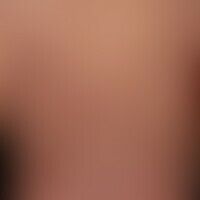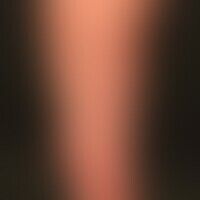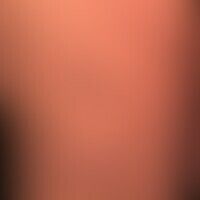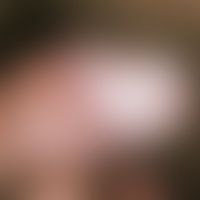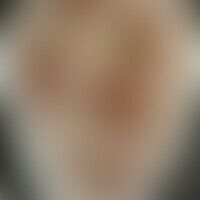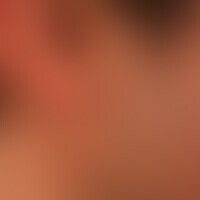Image diagnoses for "Plaque (raised surface > 1cm)"
586 results with 2919 images
Results forPlaque (raised surface > 1cm)
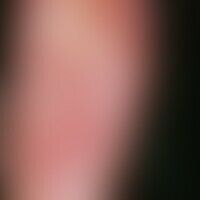
Reactive arthritis M02.99
Reiter's syndrome: flat reddened plaques with large, in places confluent pustules and coarse lamellar scaling in the area of the sole of the foot.
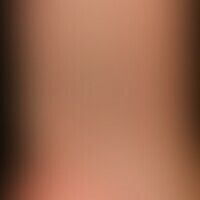
Lichen sclerosus extragenital L90.0
Lichen sclerosus extragenitaler: a progressive, generalized clinical picture (no involvement of the genital mucosa) with disseminated "confetti-like", barely elevated white papules.

Airborne contact dermatitis L23.8
Airborne Contact Dermatitis: Findings 2 years later, interim healing. Acute laminar dermatitis after exposure to pollen.
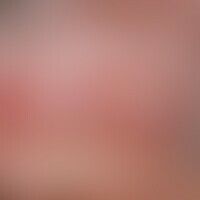
Sarcoidosis of the skin D86.3
Sarcoidosis: anular or circinear sarcoidosis, detailed view. distinct nodular structure with brown-red color. central scarred healing.
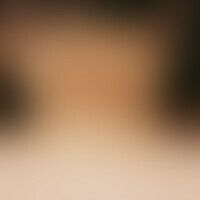
Acanthosis nigricans (overview) L83
Acanthosis nigricans: grey-brown, papillomatous-hyperkeratotic, extensive, blurred, symptomless plaques in an otherwise healthy 40-year-old woman.

Pemphigus chronicus benignus familiaris Q82.8
pemphigus chronicus benignus familiaris: extensive (changing course), greasy covered, moderately sharply defined, red, verucose plaques. permanent itching. arrows mark small roundish and also linear erosions. weeping. foetor.
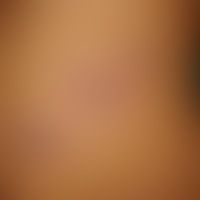
Impetigo contagiosa, large-bubble L01.0
Impetigo contagiosa, large vesicles (bullous impetigo): multiple pyoderma associated with larger vesicles with anular foci; central crust formation.

Lichen planus mucosae L43.8
Lichen planus mucosae. multiple, chronically stationary, streaky, anular and reticular, non-strippable, whitish plaques of the cheek mucosa. burning regularly occurred when eating acidic and spicy foods.
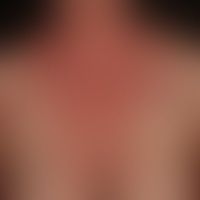
Atopic dermatitis (overview) L20.-
Intrinsic atopic eczema: chronic clinical picture with multiple, symmetrical, sharply defined, constantly itching, red, rough, flat plaques; IgE normal; no atopic EA or FA.
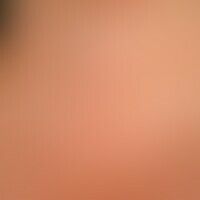
Granuloma anulare classic type L92.0
Anular granuloma: General view: For the first time 5 years ago occurred, not healing, anular granuloma at the neck and décolleté area of a 51-year-old woman.
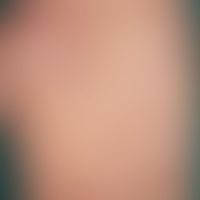
Pustulosis palmaris et plantaris L30.2
Pustulosis palmaris et plantaris: multiple, acute, disseminated, 0.2-0.4 cm large, smooth yellowish pustules next to older, dried-up brown spots on the palm of a 42-year-old man. Occurs on both palms in an acute, febrile streptococcal angina.

Bilobed flap
Bilobed flab at the tip of the nose on the left. the rotation is about 100°. the centre of rotation was chosen so that the lines of incision are at the borders of the aesthetic subunits tip of the nose, wing of the nose, bridge of the nose.
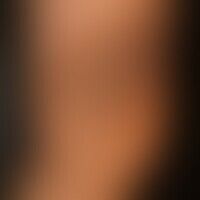
Nevus pigmentosus et pilosus D22.L6

Psoriasis (Übersicht) L40.-
Psoriasis of the hands: here partial manifestation in the context of generalized psoriasis. No preexisting conditions. The acral affection led to massive psoriatic onychodystrophies (crumb nails).

Atopic dermatitis (overview) L20.-
Eczema, atopic. chronic, red, blurred, large, severely itchy, rough plaques on lichenified skin. the elbows and face are also affected.
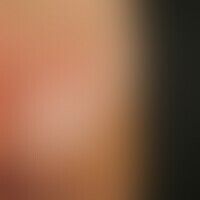
Pityriasis rosea L42
Pityriasis rosea. irritated, "irritated" form with distinct itching. unusually strong scaling.
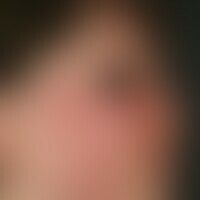
Dermatitis contact allergic L23.0
Dermatitis contact allergic: Acute, itching, relatively sharply defined, photoallergic (contact) eczema with red plaques infiltrated like pillows, partly sharply defined, in the lateral cheek area also blurredly defined. Multiple, partly solitary, partly confluent vesicles on cheeks, nose and forehead. 27-year-old female patient after application of a sunblock.
